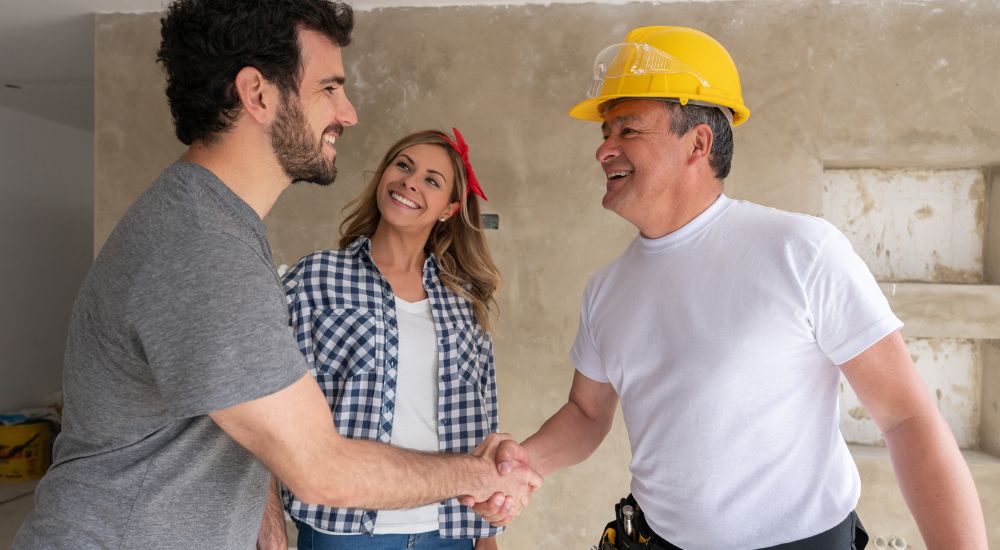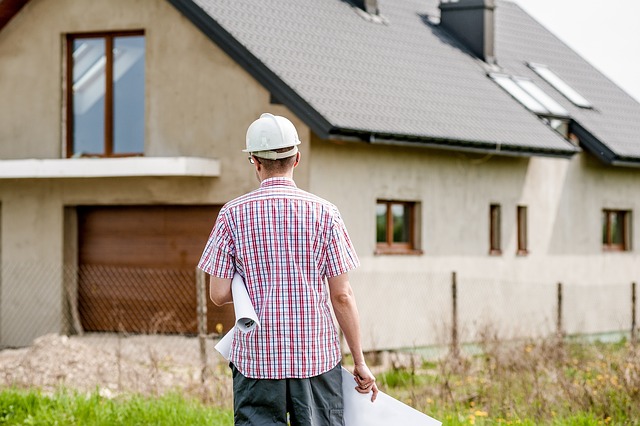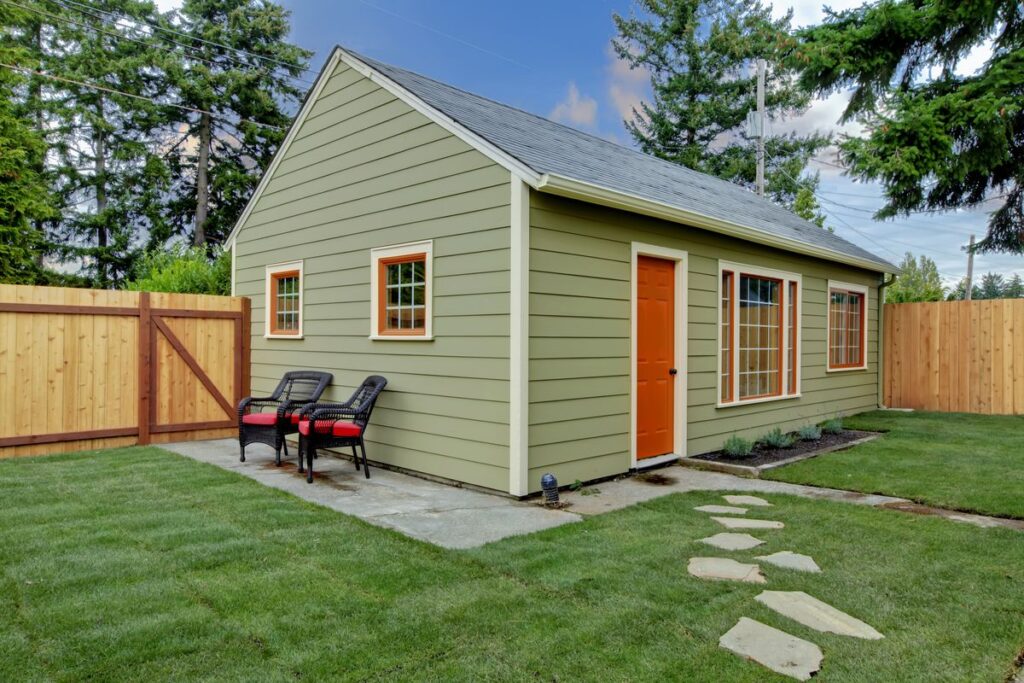In the realm of real estate, misconceptions about new construction properties, spec homes, and services abound. Unraveling these real estate myths is crucial for prospective buyers seeking to make informed decisions. From cost considerations and customization options to potential pitfalls, understanding the realities behind new construction is paramount. This blog post delves into debunking prevalent myths surrounding new construction homes in the real estate market, equipping buyers with essential insights. By scrutinizing common fallacies related to quality, timelines, resale value, and personal information, readers will gain a comprehensive understanding of what truly awaits them in the realm of new builds.
Debunking Common New Construction Misconceptions
Cost-Effectiveness
Many people believe that new construction homes in real estate are too expensive. However, the truth is that new builds can actually save buyers money in the long run. How? Well, new homes are often more energy-efficient than older ones. This means lower utility bills and less impact on the environment. For example, they might have better insulation, modern windows that keep heat inside during winter and outside during summer, and energy-saving appliances.
Another cost-saving aspect of new construction is that everything is brand new and under warranty. This means you won’t have to worry about unexpected repairs or replacements for a while after moving in. In contrast, an older home might require immediate fixes or upgrades to meet your standards.
In addition to being cost-effective in the long term due to their energy efficiency and warranty coverage, new construction homes also give buyers the opportunity to customize features based on their preferences without having to pay extra for renovations.
Character and Charm
Some people think that new homes lack character and charm compared to older properties with unique architectural details or historical significance. However, this isn’t necessarily true either! While it’s undeniable that some older houses have distinct features like crown moldings or vintage fixtures, modern builders offer various design options so buyers can add personal touches from the start.
For instance, if you love a specific type of flooring or kitchen layout but don’t want the hassle of remodeling an existing house later on, a new build allows you to choose those elements upfront without compromise. Moreover, new constructions often incorporate open floor plans which provide flexibility for different uses of space according to individual needs – something many older homes may not easily accommodate due to their structural limitations.
Understanding New Construction Home Prices
Factors Influencing
New construction home prices are influenced by several factors. Location is a key determinant, with homes in desirable neighborhoods or areas often commanding higher price tags. The size and layout of the home, as well as information, play a significant role in determining the overall cost. Larger homes or those with premium features such as high-end appliances or custom finishes tend to come with a higher price.
The cost of land, labor, and information can impact new construction home prices. In areas where land is scarce or expensive, the cost of building new homes tends to be higher. Similarly, regions experiencing high demand for skilled labor may see an increase in construction costs, which can ultimately affect the total cost of new homes.
Value of Customization Options
One appealing aspect of purchasing a newly constructed home is the ability to customize certain features according to personal preferences. This customization potential can add substantial value to a property and justify its price tag. For example, being able to choose specific flooring materials, cabinetry styles, or paint colors allows buyers to create a living space that truly reflects their tastes and lifestyle.
Moreover, opting for energy-efficient upgrades during the construction process could result in long-term savings on utility bills while contributing positively to environmental conservation efforts. These added benefits demonstrate how customization options not only enhance the living experience but also contribute significantly towards justifying the initial investment in a new construction home.
Quality Comparisons: New Construction vs. Pre-Owned Homes
Modern Building Materials and Techniques
New construction homes offer modern building materials and techniques that provide several benefits. For example, they often feature energy-efficient designs, which can help homeowners save on utility bills. These homes are typically constructed with the latest technologies and innovations to ensure durability, longevity, and information.
For instance, many home builders now use advanced insulation materials that improve energy efficiency by maintaining comfortable indoor temperatures throughout the year. This is a significant advantage over pre-owned homes, as older properties may lack the same level of insulation, leading to higher heating and cooling costs for homeowners.
In addition to improved energy efficiency, new construction homes also incorporate modern architectural designs that cater to contemporary lifestyles. Open floor plans, larger windows for natural light, high ceilings, and information are common features in new builds. These design elements enhance the overall living experience for homeowners by creating spacious and inviting interiors.
Long-Term Maintenance Considerations
When considering pre-owned homes versus new construction properties, it’s essential to evaluate long-term maintenance considerations and information. While pre-owned homes may have their unique charm and character, they often require more frequent maintenance due to aging infrastructure.
For instance, someone buying an average pre-owned home might encounter issues such as roof repairs or replacements due to wear and tear over time. On the other hand, new construction homes offer warranties on major structural components such as roofs or foundations.
Furthermore, modern building materials used in new construction properties are designed with longevity in mind—reducing the need for immediate renovations or repairs upon moving in. This contrasts with some pre-owned homes where buyers might need to allocate additional funds for updates or unforeseen maintenance shortly after purchase.
The Realities of New Build Completion Times
Variables Affecting Completion Times
New construction myths often lead to misconceptions about the building process. It’s important for buyers to understand the various factors that can impact new build completion times. Factors such as the size and complexity of the project, availability of materials, weather conditions, and even unforeseen issues during construction can all influence how long it takes for a new home to be completed.
For example, if a builder encounters unexpected challenges like ground complications or supply chain disruptions, it can delay the entire building process. Similarly, larger homes with intricate designs may naturally take longer to complete compared to smaller, simpler structures. Adverse weather conditions like heavy rain or extreme cold can slow down construction progress significantly.
Buyers need to recognize that these variables are inherent in any new build, and while builders strive to stick to timelines as closely as possible, there will always be some level of unpredictability.
Managing Expectations for Construction Timelines
To avoid disappointment and frustration due to unrealistic expectations regarding completion times, prospective buyers should actively engage with their chosen builder or developer from the outset. By openly discussing potential delays and understanding the typical duration of each stage in the building process, buyers can better manage their expectations.
It’s crucial for buyers not only to consider an estimated timeline but also allow room for potential delays by factoring in extra time into their plans. This means being prepared for possible setbacks beyond anyone’s control so that they don’t feel blindsided if things take longer than initially anticipated.
Seeking clarity on milestones within the construction timeline is essential. Buyers should ask questions about key stages such as foundation laying, framing completion, installation of utilities and fixtures – this helps them gain a clearer understanding of where exactly things stand at any given point in time.
Financing New Construction Homes Explained
Financing Options
When buying a new construction home, the financing options differ from those for pre-owned homes. For pre-owned homes, buyers typically secure a mortgage to complete the purchase. However, with new construction, buyers often need a different type of loan known as a construction loan.
Buyers usually obtain a traditional mortgage once the construction is finished and they take possession of the property. This means that during the building process, they are required to make interest-only payments on the amount borrowed for construction. The advantage of this arrangement is that it provides financial flexibility during construction and helps manage cash flow effectively.
Role of Construction Loans
Construction loans play an essential role in financing new builds. These loans are short-term and cover only the costs associated with constructing the home. Once completed, these loans are replaced by long-term mortgages which pay off any remaining debt from construction.
The terms for these types of loans can vary widely depending on factors such as credit score, down payment size, and lender requirements. It’s important for buyers to carefully review all contract terms before agreeing to any financing option.
Value Retention and Investment Potential of New Homes
Impact of Quality Construction
Quality construction plays a crucial role in retaining the value of a new home over time. When homes are built with durable materials and superior craftsmanship, they are less likely to experience significant depreciation. This means that buyers can expect their investment to hold its value well into the future. For example, a well-constructed new home with high-quality materials such as granite countertops, hardwood floors, and energy-efficient appliances is more likely to maintain its value compared to a property with lower quality finishes.
Investing in new construction properties also presents an opportunity for potential appreciation. As neighborhoods develop and improve over time, the value of new homes tends to increase. This is especially true when the area experiences growth in terms of infrastructure development, amenities, or community services. For instance, if a new school or shopping center is built near the community where the property is located, it can positively impact the overall desirability and subsequently raise property values.
Exploring Appreciation Potential
Exploring the potential for appreciation in new construction properties involves considering various factors that contribute to long-term growth in property value. Factors such as location within a desirable school district or proximity to public transportation can significantly influence how much a property appreciates over time. Moreover, being situated in communities with strong job markets and economic stability often translates into higher demand for housing which drives up property values.
Buyers should also consider other intangible factors when assessing appreciation potential such as neighborhood aesthetics and community engagement opportunities like parks and recreational facilities. These features contribute not only to quality of life but also enhance desirability which impacts property values positively.
Customization Options in New Construction
Tailoring Homes
New construction homes offer customization options that allow buyers to tailor their homes to fit specific lifestyle needs. This means they can personalize the design and layout of their home according to their preferences, creating a space that truly reflects their style and functional requirements. For example, if a family loves cooking and entertaining, they may choose to add a larger kitchen with an open floor plan for easy hosting.
The ability to customize features such as flooring, cabinetry, countertops, and fixtures allows homeowners to create a living space that meets their unique tastes and requirements. Whether it’s adding extra storage for outdoor gear or designing a dedicated workspace for remote work needs, customization empowers buyers to shape their living environment in ways that suit them best.
Customization also extends beyond interior features; it encompasses the option to select the ideal location within the community or on the property itself. Some buyers may prioritize privacy and choose a lot with more seclusion while others might prefer being closer to common amenities like parks or playgrounds. These choices enable individuals and families to build not just houses but personalized havens tailored precisely around what matters most.
Impact on Resale Value
When considering new construction homes’ customization options, it’s essential for buyers to also think about how these choices could impact resale value down the line. While personalizing a home is beneficial for current enjoyment, certain customizations might not appeal universally when selling in the future.
For instance, highly unique design elements or overly specialized rooms could limit potential buyer interest when putting the house back on market. On the other hand, thoughtful upgrades like energy-efficient appliances or smart home technology are likely attractive across various buyer demographics due to the practical benefits they offer.
Buyers should weigh these factors carefully by balancing personal preferences with broader market appeal during decision-making processes regarding customization options in new construction homes.
The Role of Realtors in New Home Purchases
Assisting with the Buying Process
Realtors play a crucial role in guiding home buyers through the new construction buying process. They assist in navigating the complexities of purchasing a newly built home, ensuring that buyers are well-informed about their options and rights. For first-time homebuyers, realtors provide valuable support by explaining each step involved in acquiring a new construction property, from selecting customization options to finalizing the purchase agreement. By leveraging their expertise in real estate transactions, realtors help streamline the entire process for buyers.
Realtors also aid homebuyers in understanding builder relationships and realtor representation. They facilitate communication between buyers and builders, clarifying any uncertainties or concerns that may arise during the construction phase. They advocate for their clients’ best interests when negotiating with builders and ensure that all necessary documentation is reviewed thoroughly before signing. This level of representation can be particularly beneficial when dealing with reputable companies known for constructing high-quality homes.
Building Trust and Confidence
One advantage of involving a realtor in new home purchases is their ability to establish trust between buyers and builders. With an experienced real estate agent acting as an intermediary, homebuyers gain confidence knowing that they have an advocate who is dedicated to protecting their investment throughout every stage of the transaction. This assurance becomes especially significant when considering factors such as warranty details, completion timelines, and potential post-construction issues.
Moreover, realtors bring substantial value by offering insights into resale properties versus new constructions based on individual preferences and long-term goals. By comparing the advantages of both options—resale properties versus newly constructed homes—realtors can help guide homebuyers toward making informed decisions aligned with their specific needs.
Eco-Friendly Aspects of Modern New Builds
Energy-Efficient Features
Modern new construction homes are designed with energy-efficient features to reduce energy consumption and lower utility bills. These features include LED lighting, energy-star rated appliances, high-efficiency HVAC systems, and well-insulated windows and doors. By incorporating these elements into the design, homeowners can significantly decrease their energy usage while enjoying a comfortable living environment.
Energy-efficient designs not only benefit homeowners financially by reducing monthly utility costs but also contribute to environmental conservation by minimizing overall energy consumption. For example, using LED lighting consumes less electricity compared to traditional incandescent bulbs, resulting in lower carbon emissions from power plants. Similarly, high-efficiency HVAC systems consume less fuel or electricity for heating and cooling purposes, further reducing the home’s environmental impact.
Sustainability in New Construction Homes
In addition to energy efficiency, modern new builds prioritize sustainability through various means such as utilizing sustainable building materials like bamboo flooring or recycled steel beams. Furthermore, many new construction homes incorporate solar panels on their roofs to harness renewable energy sources and reduce reliance on non-renewable resources.
By embracing sustainability in the construction process, builders aim to minimize the ecological footprint of new homes while providing long-term benefits for both homeowners and the environment at large. This approach aligns with growing awareness about environmental responsibility among buyers seeking eco-friendly properties that promote sustainable living practices.
Financial and Environmental Benefits
The financial benefits of eco-friendly design extend beyond reduced utility bills; they also encompass potential tax incentives or rebates offered for installing environmentally friendly features in new construction homes. Many governments provide tax credits or rebates for homeowners who invest in renewable technologies such as solar panels or geothermal heating systems.
Moreover, eco-friendly designs often increase property value due to their appeal among environmentally conscious buyers who prioritize sustainable living arrangements. Homes equipped with green technologies tend to attract more interest from prospective buyers concerned about minimizing their carbon footprint while enjoying modern comforts within an environmentally responsible setting.
Closing Thoughts
The journey of understanding new construction homes has been insightful, debunking myths, exploring pricing, quality comparisons, completion times, financing, investment potential, customization options, realtor involvement, and eco-friendly aspects. By shedding light on these crucial aspects, buyers are better equipped to make informed decisions when considering new construction properties. Armed with this knowledge, buyers can confidently navigate the new construction market and find homes that align with their needs and preferences.
As the real estate landscape continues to evolve, staying informed about new construction trends and considerations is essential. Whether buying a first home or investing in a property, being aware of the nuances surrounding new construction can lead to more favorable outcomes. Embracing a proactive approach to learning about new construction homes empowers buyers to make well-informed choices that resonate with their long-term goals and aspirations.
Frequently Asked Questions
1. What are some common misconceptions about new construction homes?
Many people believe that new construction homes are too expensive, lack customization options, or have poor quality. However, these misconceptions can often be debunked by understanding the current market and working with reputable builders.
2. How do new construction home prices compare to resale properties?
New construction home prices tend to be higher due to modern features and materials. However, buyers should consider long-term savings on maintenance and energy costs when comparing overall value.
3. What is the typical completion time for a new build?
Completion times for new builds can vary widely based on factors such as size, complexity, weather conditions, and builder efficiency. It’s important for buyers to discuss realistic timelines with their chosen builder before making commitments.
4. How does financing for new construction homes differ from resale properties?
Financing a new construction home often involves different processes and considerations than purchasing a pre-owned home. Buyers may need a construction loan or choose from various mortgage options tailored specifically for newly built properties.
5. What eco-friendly aspects are commonly found in modern new builds?
Modern new builds frequently incorporate eco-friendly features such as energy-efficient appliances, sustainable building materials, smart home technology for energy management, and even renewable energy sources like solar panels. These elements contribute to lower environmental impact and reduced utility expenses.
Elevate Your Lifestyle with New Construction by Red White & Blue Construction!
Considering a new construction project in Lafayette, CA? Red White & Blue Construction is your go-to expert for all your new construction needs! Specializing in creating custom homes and structures, we cater to your unique lifestyle requirements. Known for our proficiency in new construction projects, we are dedicated to transforming your vision into a stunning reality, whether it’s a luxurious family home, a modern commercial space, or an innovative community project. Our reputation in the Bay Area is a reflection of our commitment to quality, craftsmanship, and the high standards we maintain in every project.
At Red White & Blue Construction, we do more than just build; we craft your dream living and working spaces. With our transparent pricing and outstanding client service, you’re not just building a structure; you’re investing in a future-proof, tailor-made property. Opt for Red White & Blue Construction for your new construction project. Embark on a journey of Architectural Excellence and contact us today!
Disclaimer
The materials available on this website are for informational and entertainment purposes only and not to provide advice. You should obtain advice concerning any particular issue or problem from a professional. You should not act or refrain from acting based on any content included in this site without seeking legal or other professional advice. The information presented on this website may not reflect the most current building developments. No action should be taken in reliance on the information on this website. We disclaim all liability concerning actions taken or not taken based on any or all of the contents of this site to the fullest extent permitted by law.





